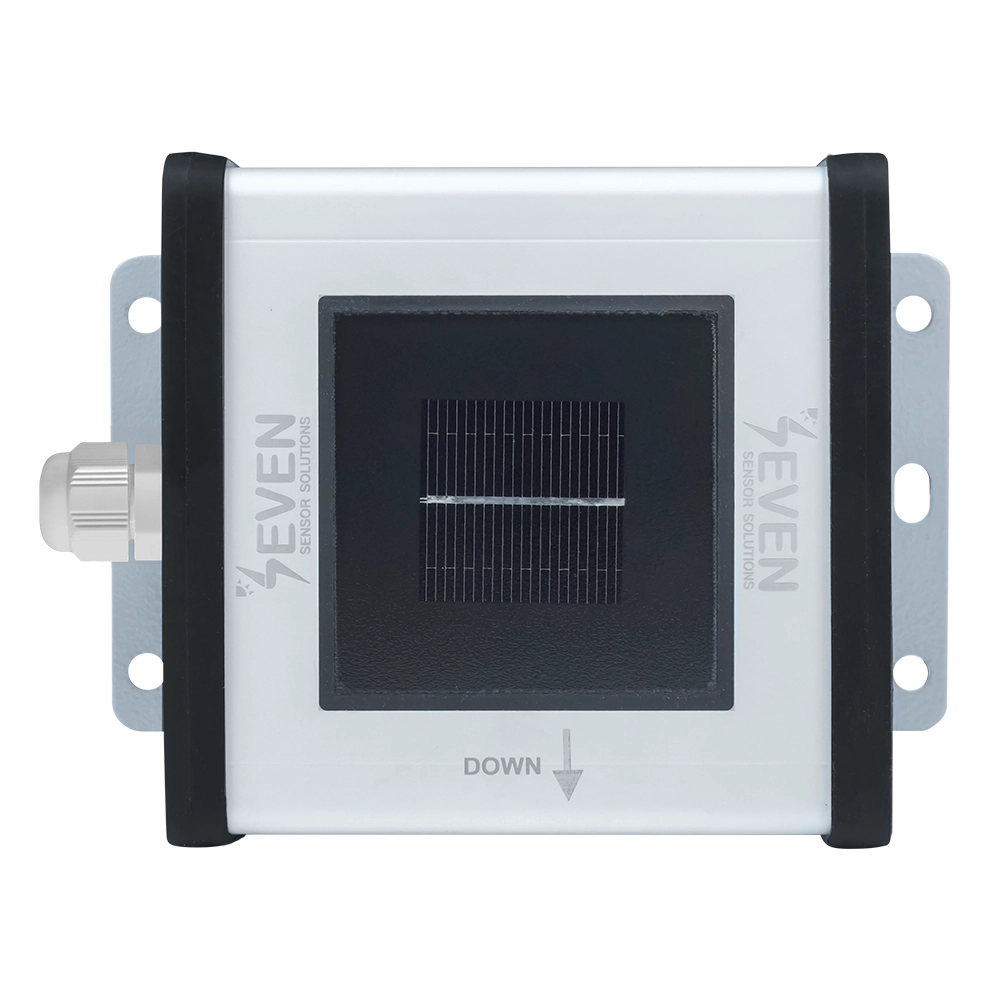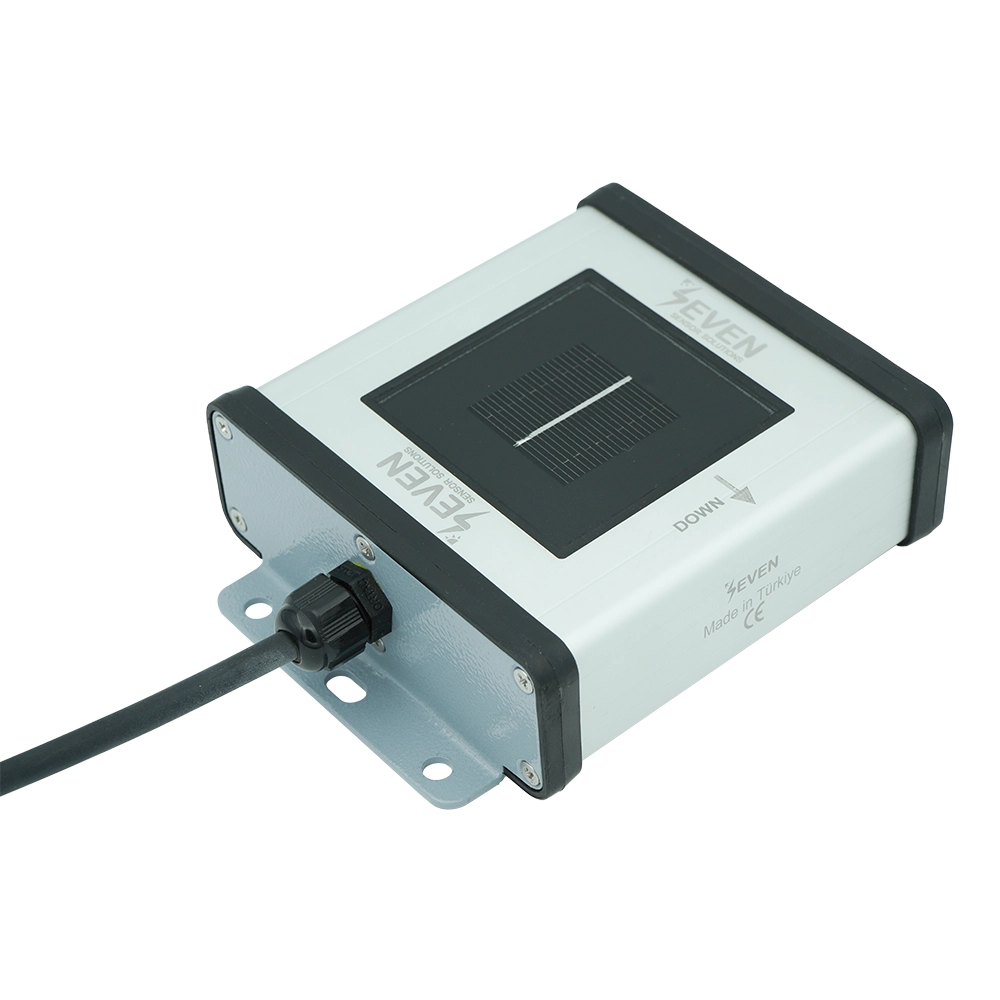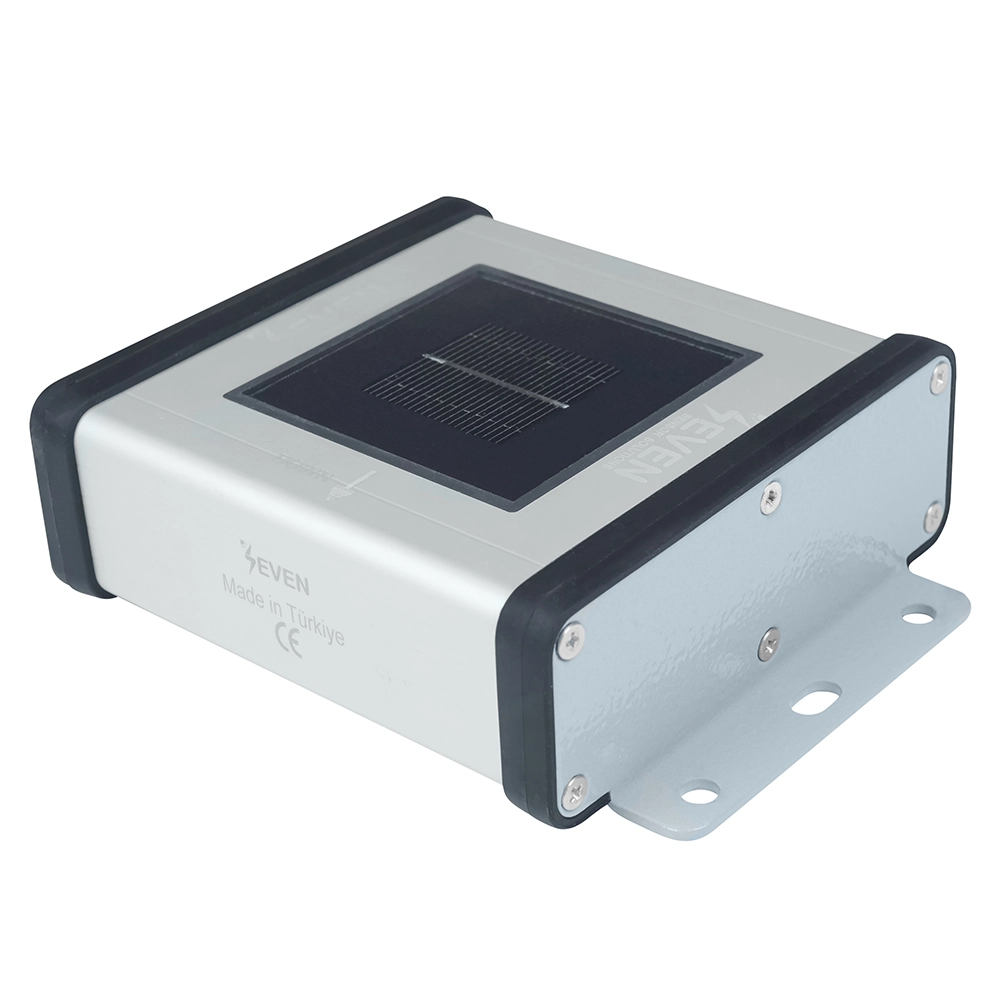Irradiance Sensor With
0-1,5V Output – 3S-IS-T-V
This Irradiance Sensor is designed to measure the radiation flux density in Solar PV plants. In addition to irradiance measurements, it also includes an internal cell temperature sensor. The sensor is supplied with a mounting bracket and cable for easy installation.
This model is fully compatible with SolarEdge Gateway and other dataloggers that feature a 0-2V input port.
TECHNICAL SPECIFICATIONS OF IRRADIANCE SENSOR
| Item Code | 3S-IS-T-V |
| Reference Cell | Monocrystalline Silicon (31 mm x 31 mm) |
| Current Shunt | High precision shunt resistor directly soldered to the terminals of the cell |
| Irradiance Range | 0 – 1500 W/m² |
| Uncertainty | ≤1%; as per IEC61724-1 standard Class A |
| Resolution | 0.1 W/m² ≤ 1W/m²; as per IEC61724-1 standard Class A |
| Response Time | 1 sec. less than 3 sec; as per IEC61724-1 standard Class A |
| Drift | Very small drift of <0.3%/ year |
| Field of View | Larger than 160° as per IEC61724-1 standard Class A |
| Tilt-Azimuthal Angle | 0°- 0°, ≤ 1°; as per IEC61724-1 standard Class A |
| Output Rate | 1/s |
| Data Output | Analog 0-1,5 V |
| Power Supply | 12 to 30 V DC |
| Power Consumption | 15 mA max @24 VDC |
| Electrical Connection | 3 m LIYYC11Y PUR Cable, UV and Weather Resistant |
| Cell Temperature Sensor Type | PT1000 Class A as per EN 60751 |
| Operating Temperature Range | -40°C to +85°C |
| Operating Humidity Range | 0 to 100 % |
| Box Dimensions | 140 mm x 110 mm x 42 mm (W x L x H) |
| Weight | 0.3 kg |
| IP Rating | IP54 (IP65, IP68 options) |
| Sensor Housing Material | Aluminum |
| Compliant Standard | IEC 61724-1:2021 and IEC 60904 |
| Calibration | Each sensor is calibrated under Class AAA Sun Simulator as per IEC 60904-2 and IEC 60904-4 by using a reference cell calibrated by ISFH-Germany |
| Test | The test is carried under natural sunlight by using a calibrated reference cell from Fraunhofer ISE, Germany |
What Does an Irradiance Sensor Do?
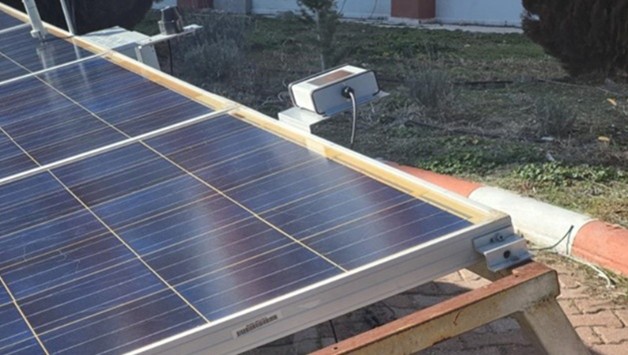
Solar irradiance refers to the amount of solar energy received per unit of area (W/m²). Measuring irradiance is crucial for assessing the efficiency and performance of PV plants. The 3S-IS-T-V sensor captures irradiance using a high-quality monocrystalline silicon solar cell, while its integrated PT1000 cell temperature sensor adjusts for temperature fluctuations, ensuring accurate readings.
How Does the 3S-IS-T-V Sensor Work?
- A monocrystalline solar cell absorbs sunlight and generates current.
- A precision shunt resistor converts this current into measurable signals.
- The temperature sensor at the back of the cell corrects deviations caused by heat.
- An electronic card processes these signals and calculates compensated irradiance values in W/m².
- Data is sent to receiver units via 0-1,5V protocol.
Why Choose the SEVEN Irradiance Sensor with Analog Output?
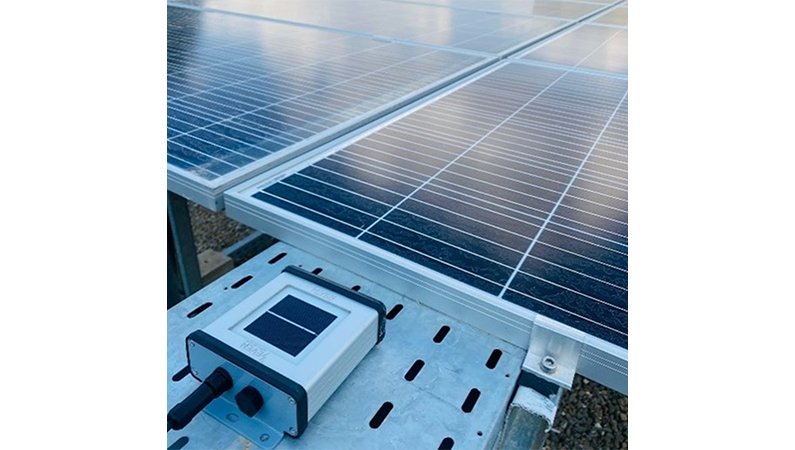
- Trusted accuracy: IEC 61724-1 Class A compliance with uncertainty ≤1%, calibrated as per IEC 60904-2 standards.
- Fast results: Response time of one second for real-time decision making. It can be reduced to 500 milliseconds upon request.
- Built to last: A UV-protected IP54 aluminum housing with optional IP65/IP68 ensures reliable operation in demanding outdoor environments.
- Quick setup: Plug-and-run design means fewer installation errors and faster commissioning. Supplied with mounting bracket and cable. Easy integration with any Analog-compatible PLC, SCADA, or datalogger.
- Cost-Effective: With its reliable performance and long lifespan, this sensor provides excellent value for money, reducing the need for frequent replacements and minimizing maintenance costs.
Frequently Asked Questions (FAQ)
1- What is the uncertainty of the irradiance sensor?
The uncertainty is ≤1%, fully compliant with IEC 61724-1 Class A requirements.
2- Can this sensor connect directly to my SCADA system?
Yes, as long as your system supports Analog 0-1,5 V, the sensor will be fully compatible.
3- How are the sensors tested and calibrated?
Each irradiance sensor is calibrated under a Class AAA Sun Simulator as per IEC 60904-2 and IEC 60904-4, using a reference cell calibrated by ISFH-Germany.
The sensors are tested in natural sunlight against a reference cell calibrated by the Fraunhofer ISE Institute.
4- How often should I recalibrate the sensor?
Recalibration every 2 years is recommended by IEC standards for maximum accuracy.
5- Where can I recalibrate the irradiance sensor?
SEVEN Sensor provides calibration services at its facilities. Calibration is performed using a Class AAA Sun Simulator, in accordance with IEC 60904-2 and IEC 60904-4 standards, and referenced against a calibration cell certified by the ISFH Institute in Germany.
Additionally we offer user-friendly interface where users can recalibrate the sensors in their home country and enter the new calibration values into the system.
6- Is the irradiance sensor Class A?
Yes. 3S-IS-T-V is Class A as per IEC standards.
7- What is the price of analog irradiance sensor?
The price varies between 155 EUR – 285 EUR.
8- Does the sensor include a cable?
Each unit comes with a 3 m LIYYC11Y PUR cable (UV and weather resistant). Other lengths are available on request. It is not recommended to be extended more than 20 meters.
9- What are the delivery times?
- Small orders: approx. 1-2 weeks
- Bulk orders (100 pcs): approx. 6-8 weeks
10- How do I set up the sensor?
Follow our user manual which include step-by-step instructions for configuring the sensors. We also provide remote setup support if needed.
11- What is the warranty?
All 3S-IS-T-V sensors come with a 5-year warranty.
12- Is the 3S-IS-T-V Irradiance Sensor compatible with Solaredge Dataloggers?
Yes. Thanks to its 0-1,5 output it can be connected to Solaredge Dataloggers and monitored via SolarEdge Monitoring Portal.
